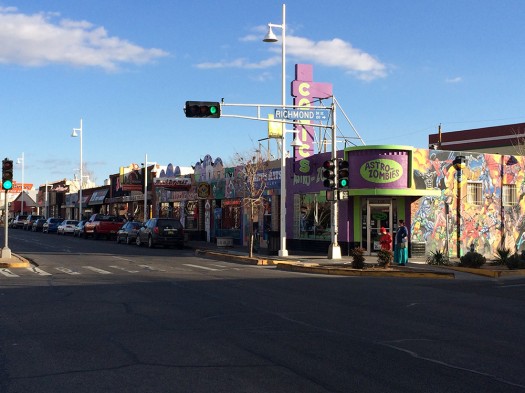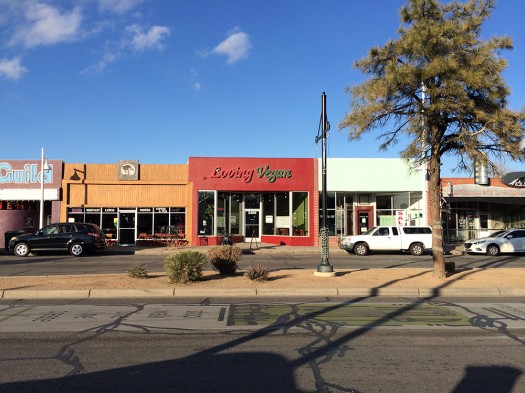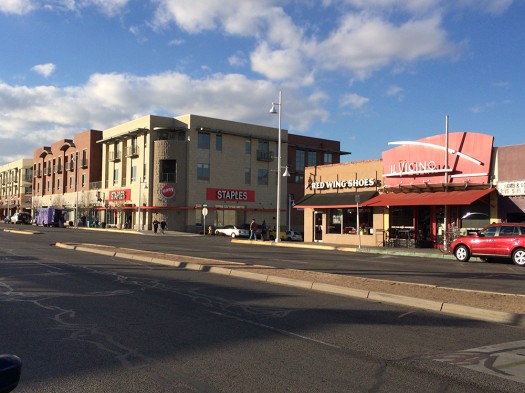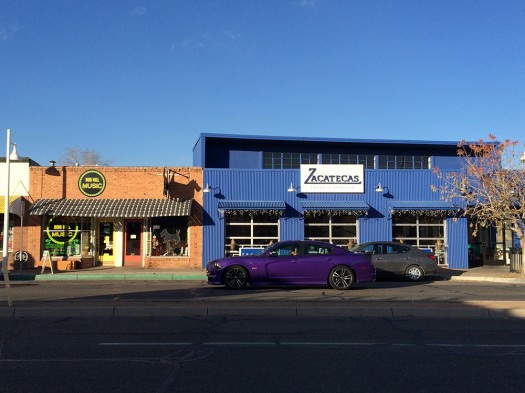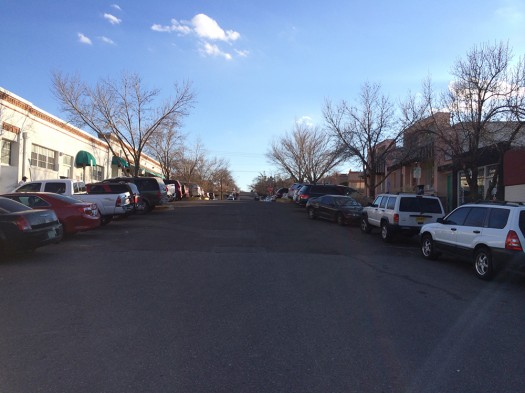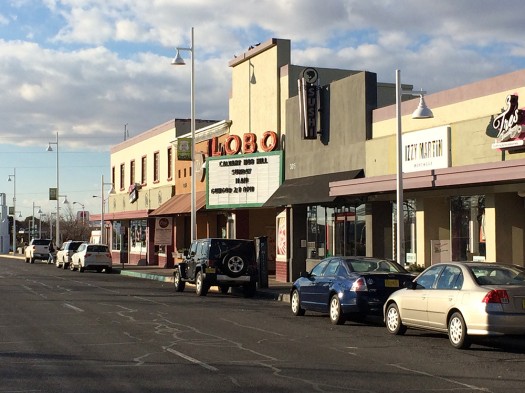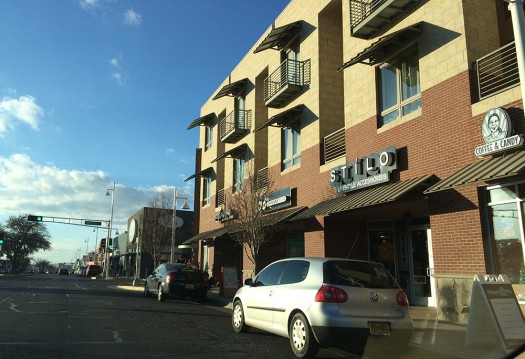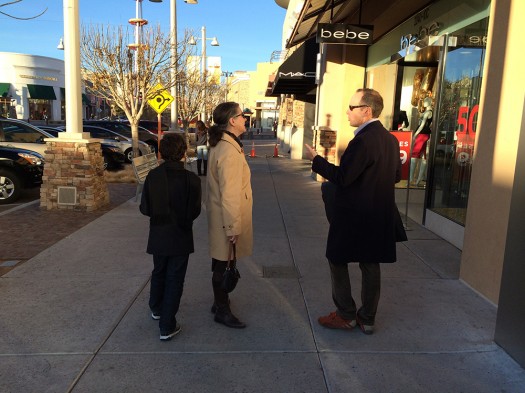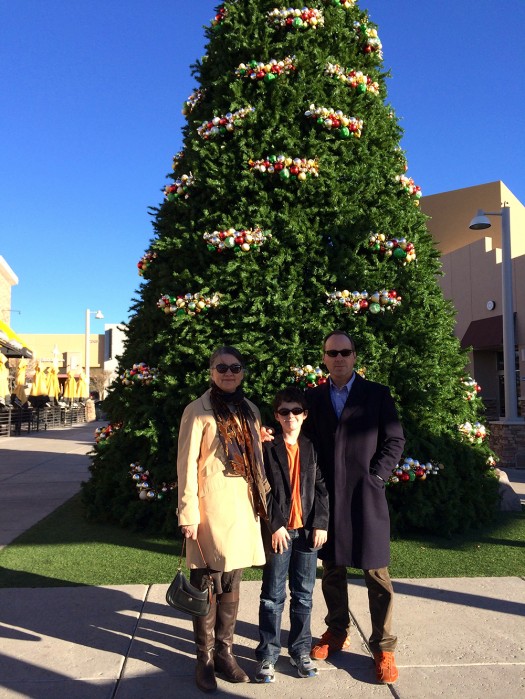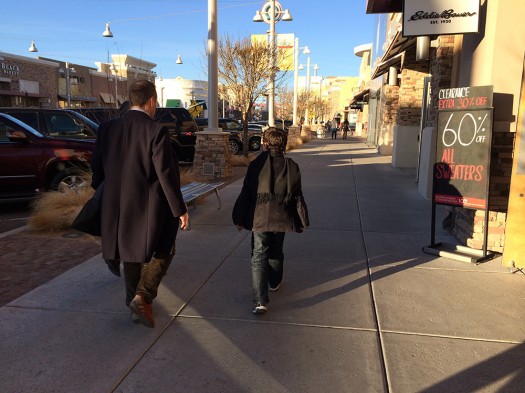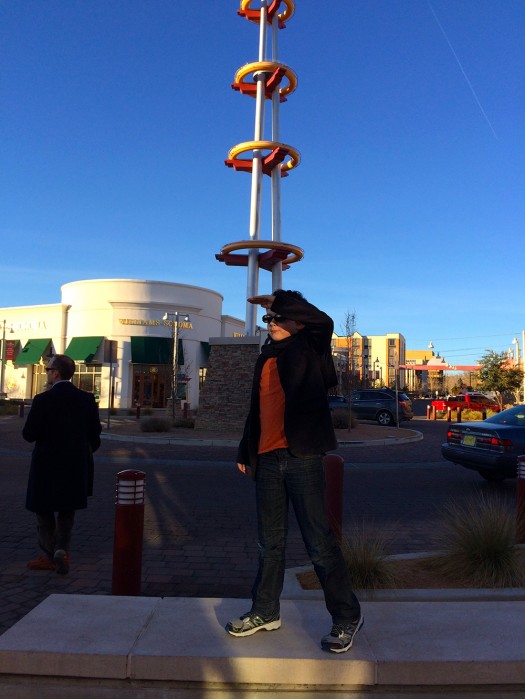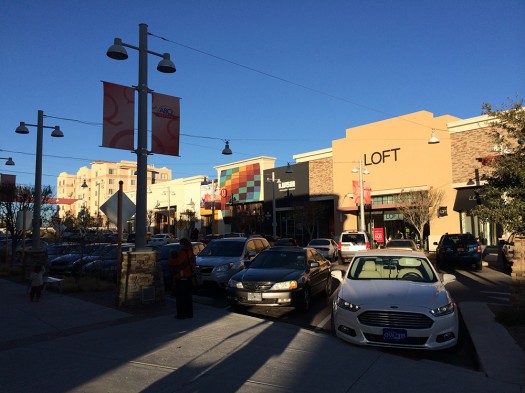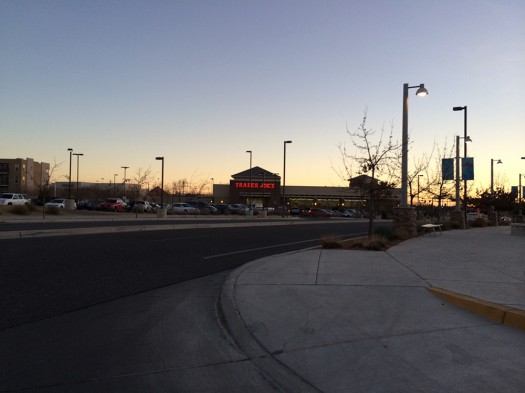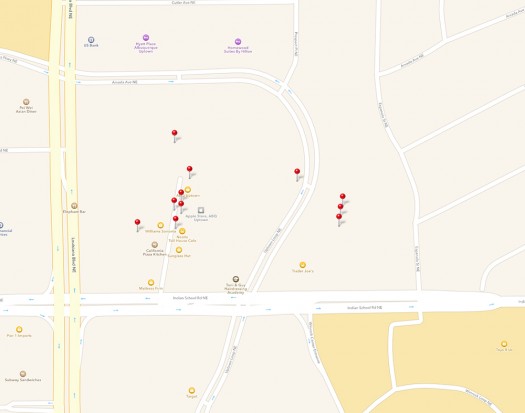A Placemaking Journal
More Lessons from Albuquerque: Nob Hill and ABQ Uptown
Being back in Albuquerque for a charrette this week, I’m reminded that I still owe you a promised discussion from my last trip to New Mexico, back in December. This time around, I was thinking about my two favorite places to shop in the city — the historic Nob Hill and the ABQ Uptown lifestyle center — and what the two might be able to learn from each other.
Much of what ABQ Uptown can learn from Nob Hill is inherent in these Smart Growth principles:
- Mix land uses
- Take advantage of compact building design
- Create housing choices
- Create walkable neighborhoods
- Foster distinctive, attractive communities with a strong sense of place
- Strengthen and direct development towards existing communities
- Provide transportation choices
That satisfying mixture of compatible uses that creates a diverse community within easy walking distance is the essence of a neighborhood. Nob Hill’s classic positioning on Route 66 puts it at the web of streets radiating into both residential and employment, allowing that 5-minute walk to take you to a variety of destinations.
Or a 15-minute walk takes you through the spine where six neighborhoods come together along Central Avenue. The complexity of multiple neighborhoods converging to form the larger place type of this urban regional center has given Nob Hill its long-lived market demand that supplements its customers who arrive by car, bus, and bike.
“While a perfect balance is rarely possible, larger parcels containing single uses must be avoided. Simply put, housing subdivisions, apartment clusters, office parks, and shopping centers are the ingredients of suburban sprawl and the antithesis of smart growth.” (The Smart Growth Manual, 2009)
Nob Hill does a good job with vertical mixed-use infill, offering up larger format national retailers on the ground floor, and office and residential above. A limiting factor in this regional center, though, is the scarce number of opportunities for these larger footprints, making the balance of local and national retailers and the key placement of anchors a bigger challenge.
ABQ Uptown’s biggest lessons for Nob Hill center on retail management: tenant mix, securing anchors, coordinated hours, and organized marketing. Although it has a few urbanism details to share as well, including parking policy and private frontages.
Seventy percent of all sales are after 5 pm, so standardization of hours is essential. The day I was in Nob Hill, I phoned ahead to a shop my husband wanted to check out, and sure enough, it closed at 5 pm. The owner kindly waited for us, but a retail street that closes at 5 is immediately giving up market share.
Branding and marketing efforts can be coordinated, to share costs and spotlight special events such as street festivals and sales. That coordination makes much more sense if everyone’s open during the same hours.
Nob Hill’s parking is functioning relatively well, but as incremental infill adds density over time, ABQ Uptown offers pointers. Here you are required to park further away from larger stores, walking past many of its smaller ones along the way. Structured parking and internal mid-block parking lots that plug right into the largest anchors drain the street life. People don’t mind strolling a little further, if there’s plenty to enjoy along the way.
A keen eye on tenant mix is essential to minimize retail leakage. Several anchor retailers are as important to main street health as they are to the success of a lifestyle center. Just as lifestyle centers go to great lengths to attract anchors, downtowns should make special considerations for larger stores behaving in a walkable, urban context. However, they need tools to ensure those larger anchors behave in a walkable urban form, including forming street walls, placing parking either on-street or behind buildings, and making sure that private frontages are in keeping with local character.
As our collective consciousness about resource usage increases, we are moving more toward a conserving society and away from a consuming society. So while I’m not trying to encourage the excessive shopper in any of us, here’s hoping developers and planners are taking the lessons learned from our collective experience, and intensifying complete, connected, convivial, compact, and complex neighborhoods.
In pictures, first Nob Hill then ABQ Uptown:
–Hazel Borys
If PlaceShakers is our soapbox, our Facebook page is where we step down, grab a drink and enjoy a little conversation. Looking for a heads-up on the latest community-building news and perspective from around the web? Click through and “Like” us and we’ll keep you in the loop.









